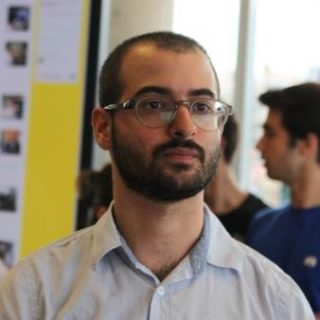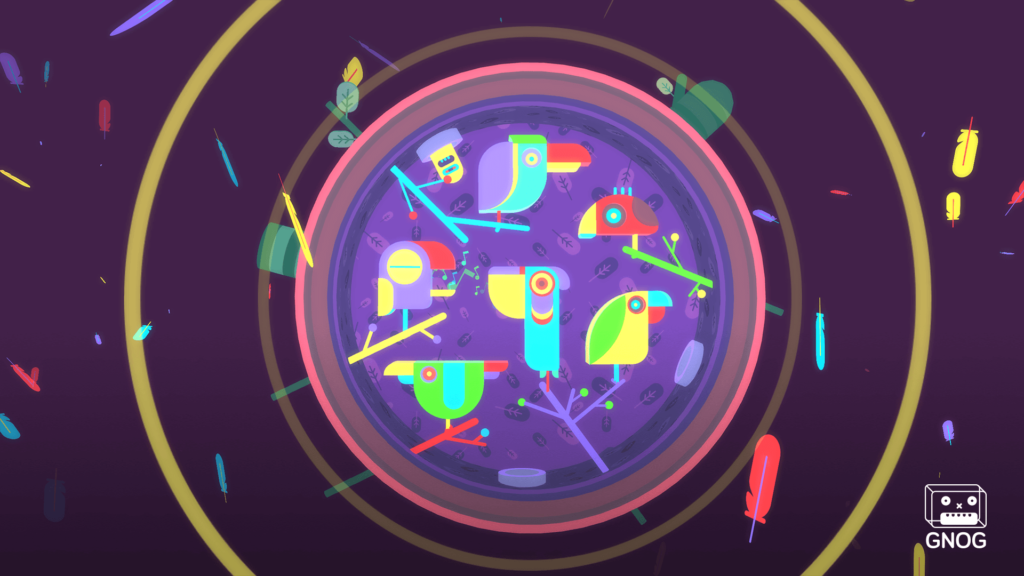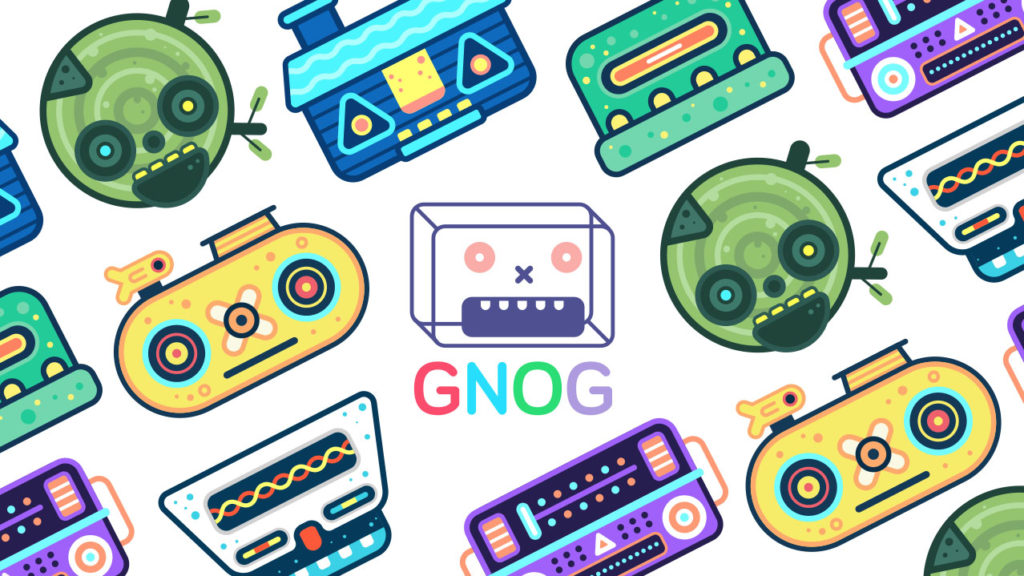If you find yourself wishing that you still had that sense of wonder when playing with toys as a child, the developers at KO_OP understand and they have a solution. The independent studio launched Gnog today for the PlayStation 4 console and PlayStation VR (PSVR), and it’s a puzzle game that aims to reignite the curiosity, enthusiasm and imagination of childhood.

Saleem Dabbous, KO_OP co-founder, studio director and producer for Gnog, described the game to AListDaily. “Gnog is about exploring these magical, monstrous toy heads that have little worlds inside of them,” he said. “You can flip between the face and its inner world, and you’re trying to uncover what the puzzle is and how to solve it. In short, it’s a playful and musical journey that is heavily inspired by kids’ toys such as Polly Pockets or Mighty Max.”
Players are challenged to perform tasks such as fixing a broken spaceship by discovering secrets within these virtual puzzle boxes. Gnog is the first game launching under the Double Fine Presents publishing label that supports virtual reality, although Dabbous explains that you don’t need a headset to play, as it also has a non-VR mode. The brightly colored puzzle game is expected to launch on Steam for PCs and Macs at a later date, followed by an iOS release, but KO_OP has not decided on whether it will support VR platforms besides PSVR.
When asked about what led KO_OP to design a game inspired by Polly Pocket and Mighty Max toys, Dabbous replied, “I don’t know if you grew up with those, but they’re toys that you can open up and they reveal a diorama inside of them. We remember that feeling of opening those toys to find out what was inside of them. You didn’t know what was going to be in there and what kind of world it was going to reveal. That was an incredible feeling that we wanted to recapture in Gnog.
The other thing for us was in thinking about our relationship with toys as kids and how we imagined whole worlds around them. We imagined that our toys were alive, and we wanted to take that feeling of magic and wonder and imbue it into a video game. That’s why all the interactions are very physical and tactile. It’s to remind you of what it’s like to play with toys and imagine them coming to life.”
Dabbous then talked about what led the studio to support virtual reality. “When we tried the game in VR, things went to a whole new perspective,” he explained. “In standard view, the puzzles look cool but very big. In VR, you’re much bigger and the puzzles feel like these out-of-this-world toys floating in front of you, begging you to play and interact. The tactile feel is really ticked up a notch in VR.”
We asked Dabbous if there were any plans for post-launch add-on content for the puzzle game. “We would love to do additional content, but we can’t promise anything yet,” replied Dabbous. “We need to see how the launch goes and see if we have the resources to do more levels. In the process of making the game, we made a lot of levels that didn’t make it into the final version. I would love to have the opportunity to make those a reality one day.”

Dabbous also talked about working with Double Fine Productions and how it helped to promote Gnog. “Working with Double Fine has been incredible on both a personal and business level,” said Dabbous. “People instantly know about Gnog now because they saw it at a Double Fine event, the Day of the Devs event, or otherwise heard about it through Double Fine. It’s been really amazing, and just having their support and backing means we can reach out to people that we couldn’t meet before. That’s been huge for helping us gain visibility for the game.”
Additionally, Sony offered financial support for Gnog’s development, helping to bring more indie developers to the PlayStation 4 and PSVR platforms. “Sony has been incredible to us and very supportive of the project,” said Dabbous “That’s why we’re coming out on PlayStation first. They really believe in the vision of the game, and I think that’s the thing about console versus PC—companies like Sony and Microsoft will put money behind games that they believe in. When you’re a small developer, that’s a huge deal. If it wasn’t for Sony, we never would have been able to realize our game and make it. It’s about that kind of support, and I think that’s why you’re seeing a lot of indies coming to consoles. They’re reaching a new audience they couldn’t access before, but at the same time, these companies are actively bringing people on and courting independent developers to be on their platforms.”
Gnog has been shown at numerous events to help spread awareness. “We’ve been lucky enough to show Gnog at a bunch of events,” said Dabbous. “They range from Double Fine parties, to Sony events, to GDC, E3 and Unity events. We’ve had amazing partners and they’ve gone a long way to help us get the game out there and show it to people. We’re really grateful for that.”
But being an indie developer has its own set of challenges, which must significantly increase once VR is included. We asked Dabbous why KO_OP was willing to take it all on.
“I completely agree that it’s a huge challenge, especially when you’re doing VR on console,” he replied. “This is our first big commercial game, and VR was an extra challenge for us. But at the end of the day, we really want to make the most incredible game that we can with the resources that we have. When we tried Gnog out in VR, we felt that it would be a shame if we didn’t do it. So, in the pursuit of making the best game we could, we did VR.”

